

Noyhauser
-
Posts
1581 -
Joined
-
Last visited
Content Type
Profiles
Forums
Events
Gallery
Posts posted by Noyhauser
-
-
First off, I (and many of us here) know a guy who has over 75 kits completed. He posts here and is worth a look:
As for me, I've got a small collection all in 1/72 (except where noted):
Hasegawa seven VF-1s (two battroids), two VF-21s (one with a resin battroid conversion kit), Moon Shooters VF-22, VF-11. 1/4000 SDF-1 storm attacker mode. Bandai Spartan. And a few resin things: VF-11 Full armor, 2 VF-4 recasts.
Edit: oh yeah I built a bunch of tect 1/144 kits back in the day: 3 VF-19s and a VF-11 Full armor.
I'm hoping to start the moon shooters pretty soon, but I have a few commissions to finish up before then.
-
You're right, forgive me for thinking that you actually wanted to have an informed discussion on this topic: please, return to your regularly scheduled ranting and posting of uninformed opinions. .
-
The NVA air defenses weren't effectively put down due to a number of reasons. Poor visibility due to jungle terrain, the White House putting heavy restrictions on bombing targets to name some.
Yes, and such issues and restrictions will always exist. We can't guarantee that they won't, so we need to prepare for them.
Early in the war, the Ukrainians used Su-25s and Mi-24s quite readily. Now it seems most are grounded from operating in the East due to the high chance of getting mangled by the sea of MANPADS the separatists have now along with some other systems that include Tor's and Buk's.
I believe that the Su-25 is actually the most shot down aircraft of the past 15 years: six were lost in Georgia during the 2008 war and I think 7 in Ukraine. The thing is a flying pin cushion.
I'm still very curious as to what if anything will fill the gap that the F-15E will leave once it's retired. The F-35 doesn't have the legs for it and the F-22 lacks the storage capacity to be worth it. It's why I thought the YF-23, with some modifications, could be a contender for that role. Northrop apparently pitched this back in 2004 but was shot down.
Well the F-35 has the same range as the F-22, but that's not going to be good enough. There was some discussion for a medium sized bomber around 2006, but that was shelved. For now it will be the F-15E, perhaps until 2030. I think you'll see the F-35 carrying long range weapons like JASSM take over some of the role, but not much. We may see something come out of the new long range bomber, or perhaps a clean sheet design. We shall see.
-
Noyhauser, I will concede that you have some valid points, however, your entire argument is pushing the use of more advanced technology to win wars. Better technology is important to aid in minimizing friendly casualties and collateral damage, but it's not the ultimate solution. Look at Iraq and Afghanistan, we've been throwing technology at the problem since we started, and it's still not solved.
First off, I think your argument is flawed because you're conflating tactical and strategic levels of employment. Nobody claimed that airpower was a panacea for what ails us in Afghanistan or Iraq. That requires a political solution, which entails a whole other set of considerations, such as economic development, governance, popular support, ect. Airpower only plays a tangental part of it.
Rather, the USAF and NAVAIR are focused on a different threats and theatres, like providing security in Asia. That requires a technical response, as our potential adversaries are engaged in developing what we generally call Anti Access/Area Denial technologies to counter our ability to operate in these areas. These technologies are also being proliferated, so that we need better capabilities to deal with them. "going back to the well" with the F-16 or F/A-18, just is not going to cut it anymore.
Moreover, this is not just a threat issue. As the world gets more connected, we need more nuanced capabilities to deal with our challenge. In 2000 we could accept some civilian casualties or friendly fire incidents, I would argue that the room for such error has narrowed significantly in the intervening 15 years. Moreover the type of effects required has widened. We're looking at the need for organic ELINT, surveillance, electronic attack (both broad based and cyber), pinpoint strikes on specific targets, among other things. Just being able to look out the side of the cockpit and some rudimentary capabilities is what the A-10 was before 2007: the deficiencies certainly outweighed any cost savings that was being accrued.
My comment about the F-35 being designed by committee, was not meant as literal as you seemed to take it. I'm well aware of how the procurement process works, but that's not design. Was it a dig at the design, yes. It's not what was advertised, it's horribly over cost, and we're still discovering problems. It's suffering a very similar situation as the F-111. By the time all is said and done, no one will want it, because it no longer suits anyone's purposes.
I think the rate of problems is perhaps as low or even lower than other development programs. I've worked or observed dozens of programs: the F-35 has problems but in terms of development time its better than most of the immediate antecedent fighters, like the Eurofighter, Rafale, F-22. Only the F/A-18E was shorter, but then again they largely reused the Legacy Hornet's avionics, so that shortened development time significantly.
And the F-111 is not apt. The F-35B is already in service, the CTOL version next year, and the CV version the year after that. Its already got 14 countries lining up to buy it, four of which have received their first aircraft. Claiming that "nobody wants it" at this stage completely flies in the face of what is going on in various allied militaries in the world. Its the utter disconnect between what a sensationalist media and internet experts are claiming, and what is going among those who actually have knowledge in this field.
You pointed out that 2000lbs is about half of the internal capacity of the F-35's bays, which I believe. You also pointed out that a majority of A-10 sorties are carrying ~2000lbs or less of ordnance, which I also believe. This begs the question, can the F-35 carry the quantity of ordnance in it's internal bay, as the A-10 can carry on it's wings, at 2000lbs?
No: most of those ordnance loads are 4X Mk82 types. However the F-35A will be cleared next year carry eight SDBs on two BRU-61 racks internally, which is 2000lbs and gives very similar effects (more bombs, but smaller size.) They are more than sufficient for taking down tanks or other targets.
Let's also talk about some of the characteristics that make the A-10 better at CAS. It's tough, It's combat survivability has been proven. They have returned to base missing wings, and looking like swiss cheese. Are low level SAMs and MANPADS a threat, you bet, but no aircraft is going to be entirely safe from a missile. You take evasive action, pop countermeasures, and hope for the best. It's simple, which means maintenance is easy and less manpower intensive (theoretically). Because of the simplicity there is less to go wrong, and it has a lot of redundancy built in, meaning it has good reliability.
No, this is incorrect. The A-10 suffered the highest loss rates of all the aircraft in Desert Storm. Certainly it was effective, but at a grievous cost: they were withdrawn in late february when eight were shot down. It is far less survivable compared to other fighters. Sure the A-10 is very robust, but that misses the point: fighter like the F-16 don't get hit at all because they fly above 15,000ft and the range of these weapons. During Desert storm, the vast majority of A-10 losses were to small SAMs... the aircraft had comparatively fewer to AAA. Moreover the past 20 years major advances in sensor technology have allowed aircraft to easily operate at high altitudes and still be very effective.
the A-10 is very limited in its speed, which means it lingers in threat zones for much longer. Sure it has good snap turn, but if you're slow, that means very little: you might miss one, but the others will get you as you bleed off energy to do the snap turn. In many ways the A-10's original design is far more antiquated than you realize. ITs actually a 1960s design and it only had limited protection against SAM missiles. It was more intended to defend against AAA, a threat which has diminished significantly due to the proliferation of MANPADs.
The gun, that 30mm cannon is the most powerful airborne gun system we have (outside the AC-130U's 105mm). True, the A-10 was designed to counter a threat that no longer exists (Russian Tanks pouring through the Fulda Gap), but it has proven itself a versatile and capable aircraft. There are more than political pressures keeping the A-10 in service, the Army want's that capability to stay around.
For the past 15 years, the USAF and USN has provided just under 100,000 ground strikes in Iraq and Afghanistan: the majority of these were accomplished by the F-16 and F/A-18 series. A-10s account for less than 25%. Before this whole A-10 being withdrawn discussion emerged, there was no controversy about how those other platforms were providing CAS. Now apparently everybody else sucks and only the A-10 can do this mission, which is kinda annoying.
As to your last point about the Army wants' the capability, I think that's an overstatement. The Army Brass has repeatedly said that they are fine with the current plans and just want to be included in process. As for what the Grunts said, I saw this post on F-16.net by a former A-10 pilot and I think current F-15 one.
What gets me are these people saying "listen to what the Army troops want, when they request Hogs"
Well, the Army only requests effects when they need CAS. It's up to the JTAC/ALO or even CAS pilot, to determine the apprproiate weapons to deliver that effect they need, as these guys know their weapons systems and their capabilities, not some Army grunt on the ground. It's the same way as the Army isn't going to ask some Air Force guys opinion on which set of armor/tank tactics are best to use against a given enemy's armor forces.
Could the F-35 be a valuable addition to the inventory, yes. Will it replace the F-16, A-10, F/A-18, and AV-8B? The AV-8B, sure because the F-35B is the only thing in development that even attempts to replicate it's capabilities. The rest? No. It can't, nor should it.
Oh, it can and is replacing ever single one of that aircraft. I think the biggest role that the F-35 can't do is Combat Search and Rescue, (CSAR) which the A-10 excels at due to low speed and loiter. But that's one, very specific role, that probably doesn't warrant spending 3+ billion dollars to keep going.
The reason why the F-35 can do more of these roles is because technology has enabled it. Its less now about the plane's raw performance, and more about the weapon and sensors it mounts.
Stealth fighters completely replacing our current fleet of conventional aircraft, is not adding value to our forces. You cannot win a war with a handful stealth fighters and a bunch of drones. Airpower is a component to victory, a force multiplier. Wars are won by crushing your enemy's will and ability to fight. And sometimes that means inflicting lots of collateral damage. You have to make war too costly for your enemy to resist.
We're actually doing a 1 to 1 replacement of F-16s, and maintaining the size of the air wing on carriers (only some squadrons will get F-35Cs, some have been replaced by F/A-18E/Fs). It will have about the same level of availability as the legacy platforms its replacing. Flight hour costs may be higher, we're still not sure about that.However we will likely require fewer flights: the F-35 will continue trend of replacing flight time with simulators.
We have all of this great technology, but do you know how many times I touched a GPS unit on a land navigation course? Once. I spent all of my time doing it the old fashioned way with a map and compass. Why? Because technology can, and will at the most inopportune time, fail.
I'm sorry, but this is an empty aphorism. By your logic, we should go back to dropping iron bombs instead of GPS munitions, because we might not have the global positioning? Our adversaries are employing increasingly advanced technologies as well: should we limit ourselves to inferior systems because of some fear that they might not work? When have we done that in the past, and when has it worked? Certainly systems have not worked on spec right of the back. But usually we work through the problems and deploy something that will help the soldiers on the frontline. The M-16 had serious problems in the field initially, but after a bit of trouble shooting, was superior to the M-14 and other rifles it replaced. The USAF and other service arms, do look at potential asymmetric threats to our technological capability and try to mitigate them. The irony is that the F-35 is actually developed to be more self sufficient in combat than its predecessors. It won't be as reliant on the AWACS, or GPS due to its low observable systems, and fears of localized GPS jamming. Are we going to free ourselves of all the threats? of course not. But we should not use the threat of the unknown to bar ourselves from any advantages we may have.
I'm not going to say that the F-35 is a bad aircraft, I'm sure it's a very good aircraft. I just don't believe that it's going to be all it was advertised. As such, replacing a very capable aircraft with something inferior at that task is not sound military thinking. Quote all the numbers you'd like, you can't apply economics and accounting to something that isn't economical. War is wasteful, and expensive, and horrifying.
It has to work as advertised. This is called the Key Performance Parameters, and the F-35 has to meet them in order to get into service.
As for you comments about shows of force, that's as stupid as firing warning shots. I don't want to show the enemy how strong we are, I want the enemy to experience how strong we are. Speak softly and carry a big stick, the louder you proclaim your strength, the weaker you appear. A show of force is an empty gesture.
But it works, and quite well. Its slightly ironic is that you initially opened up this post telling me how we need to have a non-technological military solution to places like Afghanistan and Iraq, then you go on and say we should, in essense "kill them all" or show them our will. Yet, we've used B-52, just like in Vietnam, and it did nothing. They adapt, and use our mistakes, like civilian casualties, against us. I've seen it in Afghanistan between 2005 and 2010. Rather we need to be much more discriminating in our use of force. Actually I don't think the issue is with our military force, rather we need to work on our non-military capabilities and encourage better governance. That's going to result in success.
In regards to airborne FAC and the Textron Scorpion, the idea is, you have a manned aircraft, with fully aware pilots in the mix, doing the exact same thing a reaper is doing, only pilots can look in directions other than where the camera is pointed. They can make the JTACs and ROMADs aware of incoming threats that they can't see on their video uplink.
It also gives another set of eyes, to assist in avoiding friendly fire, and making sure that ordnance goes where it's supposed to. The whole thing can go just as smoothly, and as fast, as a drone assisted strike, but the extra situational awareness in the mix can keep good guys from getting killed.
Again, having extra eyes is a lot less valuable, and even disruptive if they cannot integrate themselves into existing C2ISR network. One of the issues is speed. With current technology, JTACs can quickly identify targets using various systems which allows pilots to quickly prosecute them. It also allows for fewer negative effects. Just having eyes is of limited value: we have plenty of systems to do the same thing, but much much better. Getting the Scorpion up to the basic level of capability is going to take a lot of money.
We also have one other thing to consider. No one really knows what the true capabilities of the F-35 are and are not, except the guys who are dealing with it every day. Any information we have regarding such in the public domain, is all hearsay or taken out of context, because we don't know the variables introduced in the test.
No, I actually have a good sense of what it can do, its differences and capabilities. I might not know some of the precise specifications or capabilities (nor would I want to if I did know), but by and large I can tell you what the aircraft can do.
-
True, avionics do drive the cost up. I think you're missing the point though. Textron has built a fully mission capable aircraft capable of performing the same mission that the reaper drone performs, but with a better safety rating (i.e. it'll crash less, meaning we won't have to buy as many, as often), and thus cheaper overall operating costs (It's only 3 million dollars more per unit). It would be a perfect for airborne FAC, and low threat close air support. The other benefit is that Textron built it with off the shelf parts, and made its capabilities expandable.
I think I understand the dynamics of this problem quite well. FAC is carried out in a very different way than you suggest. Support aircraft don't fly low and slow to undertake this mission anymore. They generally fly medium to high altitudes, utilizing LANTIRN, LITENING, as well as their eyes, to identify or correlate target data. The last part is important: its now critical that units carrying out air support can integrate into existing battlefield networks to receive and share data. Boots on the grounds can designate targets, often by looking at real time aerial feeds and orienting themselves within it spatially (ROVER).
This is the problem: to operate in these areas you need these systems. ITs considered the basic level of capabilities. Otherwise, you're basically running a two level system: you get poorer results, both in the timeliness and accuracy of weapons. That costs lives. The reality is that the Scorpion has none of these systems: they cost millions, if not tens of millions to integrate and deploy. The USAF isn't going to deploy a second tier aircraft to undertake these operations, nor spend the money to get it upgraded to that level. If it wanted to, it would keep the A-10 in service, not spend more money to buy a new aircraft
The problem also isn't wholly with the capital cost of getting new aircraft. Its a manpower issue of having two completely unique airframe pipelines to support. That's what the USAF is facing right now with the A-10 retirement
Also, you need to check again on the A-10, last I heard the latest attempt to remove it from service was shot down.
The discussions are ongoing about the A-10... though there will be a phased drawdown from the looks of it. Basically the main reason why the A-10 still is in the USAF's inventory is that two of its bases sit in Arizona, where Senators John McCain and Martha McSally need to keep votes, so they tout its capabilities. Yet they also tread a fine line in their statements because Yuma (the F-35B's training base) is also in Arizona. So they on the one hand say that the F-35B is a great investment (and it only does CAS), yet claim that no other aircraft other than the A-10 can do that mission.
The F-16 and F-15 do not do the CAS mission better than the dedicated A-10. They never will. The F-16, and F-15 are satisfactory, but the A-10 is superb. When given a choice the boots on the ground want the A-10, because it scares the hell out of the enemy.
All aircraft scare the enemies. B-52s do, F/A-18s do. That's why they often do shows of force.
The reality is that the A-10 was falling behind other aircraft which conducted CAS prior to 2007. It lacked a modern targeting pod, it suffered with a poor cockpit layout, and was limited in its precision guided weapon selection. It had to go low and slow, and do visual identification of targets. That was a factor in a number of serious friendly fire incidents.
Consequently, the USAF paid for an upgrade known as Precision Engagement. It enabled the A-10 to fight the same way as the F-16 and F-15: mid to high altitude weapon delivery profiles (15~20k AGL). ITs very good at that altitude, but the airframe has serious limitations. Its still slow, so it often takes time for it to get to a target area, though it has advantages in loiter time once it gets there. Suggesting its superb is not an accurate description of the aircraft's relative utility to other capabilities. There has been unbelievable mythologizing by people outside of the military about the A-10, which blows its capabilities all out of proportion. Is it a good CAS aircraft? Yes. Is it a marked improvement over other aircraft? Not really.
It's also one of the few aircraft in the inventory that can be rebuilt. It can be taken back to zero time, A-10 mechanics have told me this. I'm sorry but your argument is flawed.
In reality all aircraft can be "rebuilt." We remanufacture CF-18s in Montreal Quebec to bring them to zero hours quite frequently through the centre barrel replacement program. The A-10's wing structural replacement program was launched because their expected life was much lower than originally estimated. Its a costly program in general, which is why states don't like doing it.
The F-35 was designed by committee, it has far too many design compromises to make it effective at all the roles. I'm not saying that the F-35 isn't a valuable addition to the inventory, but it is not something you can build an air force on.
What does this even mean? Its a empty slogan of a statement made by people who don't really understand how aircraft development occurs. All aircraft are "designed by committees." You have a requirements board (a committee), then you have a decision board (several different services, and departments coming together), then the engineers within the company who sit on a design committee (often from different backgrounds that blends the requirements into a single design), then you have the integrated project team (which is an industry-government committee). Its all done though "committees." They are key for both success and victory in difference circumstances.
An update of the F-20 tigershark would make a great replacement for the F-16 in the national guard inventory, while the Textron Scorpion would be a great replacement for the A-10 in the same way. Both airframes would make valuable additions to the Regular Air Force inventory supplementing the current aircraft. I'm not sold on the necessity of a main stealth fighter, beyond the first week of conflict. After that it pretty much becomes a conventional fight, and you don't fight BVR anyway, so stealth will get you inside visual range, and then it's useless, because the enemy can still see you.
During the Kosovo conflict, in what weeks of the intervention were the F-117 and F-16s shot down? And in Vietnam, could you tell me when the USAF and USN "pacified" the NVA Air defence systems?
The constant threat of counter air is the rule, rather than the exception in a conflict with a state with any level of economic development (unless you're Iraq and think you're going to take on the allies in a straight up fight with a massive qualitative and quantitate disadvantage). If you look at all of the newer Russian AD systems and they are all designed to be road mobile and operate in "shoot and scoot" type operations that make them extremely difficult to counter.
I'm not sold on drones for anything other than dangerous, dull, and dirty missions. I will tell you that I think the procurement process really screwed the pooch on the F-35 and F-22. They are plagued by problems, and are egregiously over-budget. I'm sorry they could be the greatest planes in the world mechanically, but their cost, is too high to make them viable. Noyhauser, you're advocating a position that is part of why DoD funding is always on the chopping block, because you're advocating the latest and greatest shiny new toys, when good enough is more than adequate to fill our needs.
Except that it isn't. We're facing serious threats all around. Earlier you posted a scenario where we would fight china and somehow use A-10s to take them down. Its fanciful to say the least. We recently sent CF-18s as a show of force to Russia over their aggression in the Ukraine. What we saw was sobering: powerful SAM systems and advanced fighters: and these were aircraft modernized to the current USN/USMC standards. While our pilots had tactics that would have help mitigate some of the risk, our fighters were still at a major disadvantage.
The A-10 is not a survivable aircraft on a modern battlefield. As far back as the Gulf War the aircraft suffered grievous losses from low level SAMs: it was bad enough that the combatant commander had them pulled from theater. The titanium bathtub and other systems were designed in an age before low level SAMs, they were primarily intended to ward off 23mm cannon strikes, but do much less well vs directed energy/annular blast warheads that are common with MANDPADs. The lack of survivability is a reason why the USAF pursued Precision Engagement, and now, the reason why they want to retire the platform.
I'm not sold on the F-35, at all. I think we need to replacing the F-15, F-16, and A-10's with aircraft designed to replace them individually. The F-15 is a big, fast, maneuverable dogfighter, designed to kill enemy aircraft. The F-15E was optimized to drop bombs, but is still a capable F-15. The F-16 was purchased to supplement the F-15 with a more numerous and less expensive fighter, that could outperform any other aircraft of similar type. The A-10 was purchased and designed to kill tanks and provide Close Air Support, something it does exceedingly well. The F-35 was supposed to be able to do all of this, but I know it lacks the payload to perform adequate CAS duties like the A-10.
The vast majority of CAS Strikes over the past 15 years, A-10 or otherwise, involved less than 2000lbs of ordnance.Here's a website that tracks A-10 sorties in OEF. Most of those sorties are under 2000lbs of bombs. That's basically 1/2 of the F-35's internal bay capacity, while other aircraft do that quite easily.
The F-15/F-16 can't do CAS quite like the A-10 either, because of their speed and lighter payload. While the F-35 has the capability to carry external stores, I highly doubt they will ever equip it in such a manner, because that will spoil the stealth characteristics.
They test it on a daily basis. Its really not an issue. You're likely thinking of problems with the B-2 or the early F-22 experience.
.
Internal bays necessitate a larger aircraft, and the F-35 certainly is larger than the F-16 it's supposed to replace, which means with all that expensive material it costs way more than it would if it was the same size as an F-16.
I'm not saying we shouldn't buy it, I agree with Grig on his point about us purchasing a less than finished product, but first it needs to work. From what I understand it's a maintenance nightmare. It's not reliable yet, since I've also heard it's plagued with problems, that have driven cost per unit up.
You cannot build an air force around stealth fighters. You can't, it costs way too much, and the return on investment is very low. We need to focus on making Generation 4.5 type aircraft to fill the gaps in our fighter fleet. Honestly, I'd love to see the Air Force buy the F/A-18E/F, because it's still in production, it should stay in production, and it's a great and versatile aircraft.
Currently the F/A-18E cost more on a single unit basis right now than a F-35 (about 90 million right now vs $85 for the F-35). the cost difference is because the LM will produce the F-35 at a rate of 10 or more a month in two years' time. Currently they produce one F/A-18 a month. IT would take a massive investment to bring the cost down, and even then you're investing in 1990s technology. Just to make the aircraft survivable the US Navy also has to buy a set of Growlers, because it can't operate near hostile defence sites. The Rhino will increasingly just be a bomb truck, employing costly stand off weapons, behind the front line F-35 and (in the longer future) UCLASS team.
-
The Scorpion was self funded by Textron, Bell and Cessna. They built it without any procurement contract or requirements.
Yes, but as you very well know, airframe isn't what's the cost driver on aircraft: its the avionics. Comms, sensors ect. That stuff hasn't been developed, because its what's going to cost Textron the real money to develop. That means adding at very least Link 16, ROVER Compatibility, among systems, plus some level of sensor integration. I did overstate the potential cost, but its not going to be cheap to make it conform to the USAF's needs. Otherwise it makes more sense for the USAF to either buy more Reapers, or continue with its current force structure. The reason why the A-10 is being removed from service is that it basically does what the F-16 does now and at the same cost. Eliminating a whole class of aircraft and its logistical and training pipeline is a major cost savings. Adding a new one, even if it is cheaper, creates an entirely new one. If this is an actual need be to take the eventual winner of the upcoming T/X program, intended to replace the T-33 and other training aircraft, and then offer a side contract for upgrading it to a light CAS aircraft. Remember, the USAF already had a light fighter program, operated at the behest of the Afghan Government, which it then cancelled.
Frankly, the Scorpion is wading into a market that has vast overcapacity, and there are structural reasons why its going to have a difficult time gaining orders. Currently, There are over a half dozen aircraft that operate in a roughly similar space, often at a far lower potential cost. L-139, M-349, T-50, HJT-136, Yak-130, L-15, JL-8, among others.
For Second or third world countries, cost and geo-political considerations are critical. While the Scorpion may boast better performance in many or most areas, its not going to be cheaper than the other options or get the same financing. China and Russia are willing to support states with generous loans or cut rate prices. With the Scorpion unlikely to win contracts even in the United States, it can't rely on that support. So it is unlikely to ever be a world beater in terms of contracts.
Yes the USG has always given the manufacturers the design requirements and money to develop a prototype. Usually certain number of prototypes were funded for evaluation by the USAF or USN but never have we paid for not only the prototypes but also the full production run until all the kinks have been worked out.
Well, first off, we haven't paid for the "full production run" of F-35s. Its purchased lot by lot, through the usual contracting process. DoD is considering a "batch buy" which is a form of Multiyear procurement for FY18~21, but that's not the same as a full lifetime procurement. We've indicated what our requirements for production are, and the Industrial partnership has developed the industrial base for it. That's pretty basic stuff that happens for all projects. I'm not sure how you think the F-35 is somehow unique in this regards.
Second, DoD has in the past purchased items sight unseen. Back in the 1950s they attempted an approach called Cook-Craigie approach, where they did buy entire programs without a prototype... you had early production models that they paid for and attempted to enter into service.
You think no internal gun, weapons load and added weight due to the engine rotation gear is the best thing that could have happened to the F-35B.
Could you point me to where I said that? Because I didn't...
To expand on what I said: the STOVL Version imposed a series of specifications that would help the CTOL F-35A. The weight reduction efforts did significantly improve the F-35A's performance. This is a chart of the F-35A's Weight. See how the program
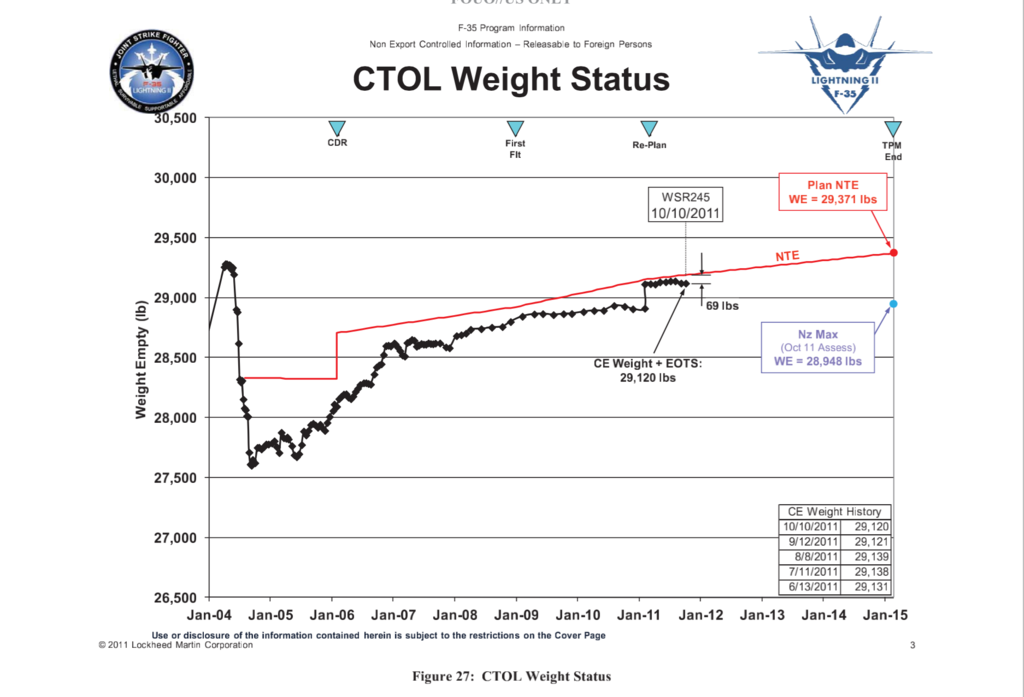
See that massive drop in weight in 2004? that's SWAT, a major weight reduction effort implemented in order to improve the F-35B's performance. The F-35C never saw the same effort, and it's weight has remained largely constant during that period. In speaking with some Lockheed Engineers, they point to some of the requirements of the C version that caused greater technical challenges, such as the levels of redundancy due to Navy requirements.
I have been around the F-35's and talked with the maintainers. it has a laundry list of issues, to save weight they use plastic cannon plugs (really have you ever had to disconnect one that was extremely tight) they told me they break very easily with cannon plug pliers.
Sure. I've spoken to a number of them too, and yes there are issues... I never claimed otherwise. I can go on about the ALIS problems, since that's an area that I study.
The panel to pull an oil sample (JOAP) has 30 small bolts all the around it since no one at LM bothered to think the way the USAF does when it comes to engine maintenance. The idea by LM was that one sample a day was all that would be needed on the F-135 engine. Well the USAF like it always has demanded a sample be taken every flight to watch engine wear on a new engine series (which I din't blame them) the F-16 has only gone from pulling sample every flight to one every 10 hrs in the past 5 yrs after 30 yrs of service.
Certainly contractors can and do make bad decisions: I can identify a number of ones with the F-35's health management that they actually repeated from the F-22 program. In this case however,there is a reason why the F-35's oil sample panel is not easy to check: because it was never intended to be used heavily. I'm not a maintainer (so forgive my inexactness), but this was what I've learned, partly thought another F-16 and now F-35 jet engine mechanic, with over 20 years of experience on the F-16. He worked on the flight line, intermediate, module and test cell.
So, I think its important to understand how the F135 is supposed to operate. Rather than traditional oil sampling, borescopes, inspections, the F-35 features more onboard sensors to identify potential problems earlier. The oil sampler is actually built by a Canadian company called Gastops, and its starting to be installed on a lot more aircraft, including the F-22. Here's a scientific paper on it:
http://www.ewp.rpi.edu/hartford/~ernesto/F2006/EP/Aids/Papers/Figueroa-Rodriguez/Miller.pdf
This is not intended to be a replacement for traditional sampling. Rather the realtime system alerts maintainers of the presence of foreign particulates in the oil system, at which time they would open up the engine to take a regular sample. I suspect that the procedures you're referring to were implemented in the wake of last year's engine failure, where there was no advanced warning of a problem though the onboard systems (and later diagnosed to be due to excessive rubbing on the stator, which would not have shown up in the oil system). Whether or not the USAF continues with this practice I'm not really privy to, as its outside my area of work.
Regardless, This system is part of a greater effort to move away from regular checks and life determined parts. Will it work? Well we're already seeing this trend occur in the Civil aviation world. The A380 has over 150,000 sensors on it, which drive the health management system. This is the military's attempt to incorporate some of these technologies in order to streamline maintenance on the F-35.
By the way all the aircraft you listed on that chart were not "precursor" aircraft. They are the definitive models or highest produced model of those series. Their development was part of the continued life of the frames. Of course the government paid for the modifications.
I think you're misreading the chart: Its the number of aircraft before the definitive type listed. The F/P-80C was the definitive type, with over 500 P-80As being put into production... which were later heavily modified to the F-80C standard.
The USG always pays for modifications to extend or advance a frame. The F-4E was reaction to the lack of an internal gun mounted in the F-4, yes they did upgrade the other systems but these were seen as the continued development of a frame that was already in service and in full production. The 290 F-16A's and B's were not ordered into production until changes were made to the YF-16 after its test flying were done (addition of a larger radar, a change in the nose gear door, changing the positioning of the EPU ground safety pin to save money on wiring).
Sure, but the 290 Block 1s, 5 and 10s were not nearly as capable as the Block-15: they were quickly upgraded to that standard by the mid-1980s. The difference is that the current F-35B and LRIP aircraft have an established upgrade path to full capability, while the Block 1,5 and 10 F-16s upgrades were undertaken after deficiencies were identified.
Also if the current F-35's are combat capable why hasn't the USAF declared the F-35A operationally ready? Because they are still clearing the frame to drop and use the munitions in the inventory. Yeah it has lots of great systems in it but it is still far away from being a "great" aircraft.
Sure, but it doesn't mean the B version is not combat ready: two different services have different requirements... that's not really much of a surprise. The Air Force already has the F-22 and a number of aircraft, and it envisions using the F-35 in a wide variety of roles. The Marines are more focused on CAS, so their requirements are more limited: that means they can get away with 2000lbs of ordnance, which is still much more than what the AV-8 and the F/A-18 could do for them. Nevertheless, when you look at the package of capabilities that the F-35B offers compared to any other fighter out there, it is a significant improvement: that still does not mean its fully developed, nor would I claim that is the case.
As a final note, please understand that basically you're taking a number of my responses out of context when I'm responding to an individual who basically thinks the F-35 is the functional aircraft equivalent of the devil spawn. Its easy to say that I'm overstating a position or lack nuance, when the original comment I'm responding to lacks any of that completely.
-
Here's one of my current Gunpla projects. Easily one of my favorites.
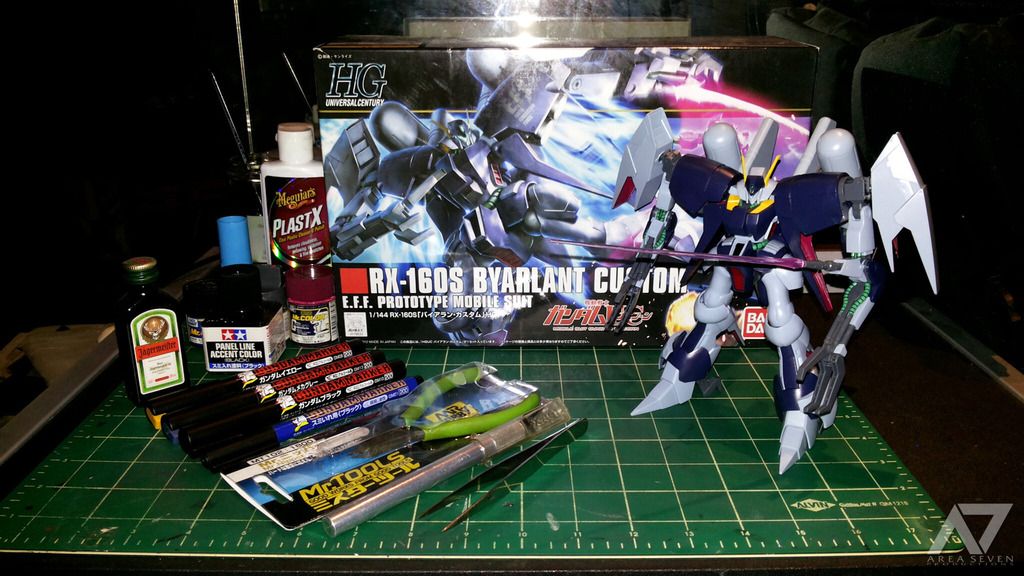
Is Jager an essential part of the building process? Praytell, how do you use it?
-
The main power of that radar and sensor package being its ability to coordinate the data from multiple aircraft, that system not being operational on currently active F-35Bs is kind of disappointing. And by kind of, I mean very.
Which is a capability no aircraft in the world today save for the F-22 has: the F-35 can do raw data correlation between two aircraft currently, up to four or more in the coming months. It also has Link-16 for communications, which is the basic system used by all other aircraft. Nevertheless, the Radar, Electro Optical and IR systems are far beyond anything currently in service.
Not to mention they've noted certain kinds of ordinance are still not compatible yet, including the small diameter bombs the jet was supposed to carry for maximum on-target damage what with its stealth penetrations.
I don't know what "maximum on-target damage" means, to you or anyone else. SDB is designed to have very low collateral damage and (in block II, just now coming into service) moving target hit to kill capabilities. GBU-16 or 38 are not as capable, but have been doing that very job for over 15 years, with thousands being expended over Iraq and Afghanistan. The plan since 2012 has always been to only have a small number of weapons available for the block 2B standard. The marines accepted this years ago, as the package of capabilities, far outstripped anything they could field.
It's just PR. It's still cheaper (and probably more effective) to fly a loaded-for-bear F-18 and an E-3 into an area you want to blow up. Without the sensor fusion, night vision HMD, or the types of bombs ideal for taking out small insurgent targets (which are our only enemies at this stage) it's just a single-engine STOVL-capable half-stealth Gen4.5 fighter without enough payload capacity. I mean. At least the STOVL works. Otherwise, the a-hole in the Marines who demanded the F-35B even have STOVL, one of the main things that held back development, would probably be lynched at this point.
The aircraft has partial sensor fusion, full night vision HMD, and can employ the weapons (GBU-16, 38 and 32) which have accounted for the majority of weapon drops in afghanistan and Iraq since 2001. The most common combat loadout on combat aircraft has been two 1000lbs or 500lbs class weapons and fuel tanks... which is what the F-35B carried internally today, as well as a full load of fuel. So claiming the aircraft is somehow deficient or not a major advancement over current aircraft designs, is just factually incorrect.
What doesn't help the F-35 though is the heavy landing gear installed for naval use. it is one of the prices the design has paid for in its multi service use design. If it had normal sized gear for AF use a large amount of weight could be saved. The weight issue is a major factor in its payload capability.
No, the CTOL and STOVL version's landing gear is different from the CATOBAR version.... as is the structural reinforcement around the entire aircraft. In reality the STOVL version was one of the best things to happen to the F-35A: it enjoyed a huge amount of weight saving that might not have happened otherwise. If anything commonality with the F-35C has had more of an effect on the aircraft' performance.
It will take some time to clear the problems it has as F-ZeroOne said. One big mistake made by the government was the fact they bought it before the plane was even thoroughly tested. In the past the manufacturer was always responsible for testing the bird and making necessary changes for performance before the government even purchased one production model.
With some very obscure examples (F-5/20 come to mind)prior to the 1980s, the government has ALWAYS paid for the development and testing of an aircraft. No company would invest their money with no guarantee of success: That's why they negotiate cancellation clauses. Even the Textron Scorpion requires billions in development from the USG to get it to a combat ready configuration: its something the company is not willing to spend without any guarantee of funding.
If you're talking about concurrency, which is purchasing of aircraft while still in development, then the F-35 is no different from any other aircraft. there are currently 340 LRIP aircraft planned, I believe 150 or so build.

Moreover there were over 290 F-16A Block 1 and 5s built before the 10 appeared. And we're getting F-35s now that are combat capable, and will be upgraded to full standard by 2022.
-
Well that's disappointing. It looks like the only thing that's actually working on the plane is the STOVL. Hopefully we've got that at least.
Yeah, dropping guided weapons, the most advanced radar and sensor package currently installed on any fighter in the world: not worth mentioning at all.
-
Looks really well done for an early test shot. Are their kits easy to find?
-
So I think one of the cool things that has changed in the eight years since Area 88 created this thread is that many, if not most of these videos are now available on youtube. Last night I watched and really enjoyed Urban Square... which was awesome. It had the classic hard boiled detective.... AWESOME. I see its like 50/50 on which OAVs are on the tube, but its still far more than before. Maybe we should post them here?
-
Sweet! I'm probably going to go in October for some family/work stuff, so I'm going to try to catch this (and that book looks fantastic).
-
Because we, who have no security clearances, no stick time in any current fighter, no aerodynamic education, and no current military/DoD/Lockheed employment, have picked up bits and bobs from the Internet which taken as a whole may well add up to less than the true capabilities of the aircraft?
If any of you do, please say so. I honestly don't know who may have the Truth.
I don't know exactly what you looking for, but I've worked closely on this file. My area of expertise is comparative procurement policy, but I also studied military strategy for a masters and worked in the field, so I try to understand the nexus between technology, policy and strategy. I don't have a lot of time (because I'm working on some stuff F-35 related as we speak) but I'll try to answer any question you have.
One thing is beyond question: no matter its abilities, even if it does everything it says it will on the tin, this is grossly late and too expensive by half. Worthy airplanes like the TSR.2 where killed for less than half of this crapola.
No, I don't think that's fair... if we look at historical antecedents, they are far far worse... we just don't really have the context to see that, which is in part due to how the media completely overhypes things.
So the F-35 has basically exceeded 30% of its projected contract cost... that's called a Nunn Mccurdy Breach in acquisition parlance. Programs like the TSR2 or the Avro Arrow typically did far worse... like in the Arrow's case, 120% of its projected costs, and it was still going up when it was cancelled. In the last 50 years only one new fighter program did not have a cost overrun, and that was the EA-18G, which was basically an upgrade of the F/A-18E.
I'm not trying to be flippant about costs overruns, but defence acquisitions are among the hardest areas to predict and budget for a government. The F-35 is probably the most complex technical achievement being made by man today... and in 2000 you had to predict how much it will cost, its exceptionally tough. Still its not nearly as bad as people have made it out to be... especially compared to the F-22 or other aircraft.
Sir Camm had yet to see an airplane like this, which may have length, width, and height imperfectly conceived but which has absolutely NAILED the political dimension.
I don't think its imperfectly conceived at all.
Back in the 2000s I had the opportunity to see how the U.S. was implementing new battlefield control systems that were intended to revolutionize its C2. The F-35 basically reflects the information warfare trends that we started in the late 1980s, and put into practice in Iraq and Afghanistan. When I look at stuff like Army's WIN-T, or the Navy's Cooperative Engagement Capability, the F-35 is just another system that plugs into it, but its far and away beyond everything else. I'm struggling for an analogy, but its like if you went back in time today to 1995 and tried to explain the virtues of Facebook, without being able to show it or letting people use it. they probably wouldn't get it. Really warfare is a much different environment than what has gone on before. I posted a video earlier of an USMC Col. describing this area, which you should watch... he gives a very clear view of how the times have changed.
-
Every avionic feature on the F-35 has found its way into other airframes because it's been over a decade since they were invented, and electronics tend to have that trickle-down effect. The only advantage the F-35 offers is multi-aspect stealth, but even that has drawn criticism for being potentially inadequate anyway.
Once the initial wonderment waned, I ceased to see the viability of the JSF.
I don't know why you think that, but its completely not true. No aircraft, save for the F-22, has the sensor fusion system on the F-35, none of them have DAS, or the APG-81's sensor and jamming capabilities. None of them have data sharing capability of the F-35. That package is unique, and is really what 40% of the F-35's cost relates to. In short, claiming that every, or even some, avionics features on the F-35 has found its way onto other aircraft is just plain ignorant.
But hey, don't take my opinion on it... lets listen to a USMC commander with thousands of hours on the F/A-18, F-16, F-22 and the F-35B.
If you have any interest in this area, you owe it to yourself to listen to a real professional talk about his trade.
Said it years ago, will say it again:
Australia was smart, saw how the F-35 program was going, and decided to get really high-end uber-spec'd Super Hornets instead. Cheap, good, proven and already in service. Their Super Hornets are better than any in the U.S. Fleet, and have many features that the F-35 touts. ASRAAM capability alone gives it a boost to close-in fighting, and it's got every sensor you can think of plus a nice AESA radar IIRC.
They didn't do it for that reason. Basically Australia calculated the capability and cost of the F-111 fleet and decided to retire the aircraft prematurely. However that would leave them with a capability gap between the pig's retirement and the expected F-35 IOC. Hence they chose to go with the F/A-18E and EA-18G as a stopgap. Its quite likely that the aircraft will all become growlers by 2025, as the 72 F-35s get delivered.
I think the overarching concern isn't just in the F-35's ability to fight close-in, but its overall survivability, which is hampered by its single engine, and moreover by its poor maneuverability. Its role isn't long-range air superiority, either. The F-35 is designed to infiltrate and launch primarily air-to-ground ordinance. For that mission, high adaptability is necessary from a single-seat fighter-attacker. This isn't a bomber with tons of space for countermeasures, and a squad of escorts to draw heat away, it's a single-man infiltrator. So it has to be able to do everything. The fact is, once the bomb bays open up, the F-35's stealth is entirely defeated, giving it a clear position on anyone's radar. That's not even to mention concerns that the multi-aspect stealth design of the jet isn't up to the task of subverting modern radar systems. And it's not like the plane is invisible to visual or infrared tracking.
You can't always predict the scenario, and intelligence can be incomplete. I don't know if I personally would feel comfortable with the prospects for airframe survivability in less-than-ideal operating conditions. All it takes is one misplaced digit, and some pilots won't be coming home today.
I know that those are major reasons many in the Navy aren't exactly pleased with the notion of being forced into the F-35, and they're among the reasons Canada's air force has a faction that is pushing to drop the JSF program completely- they've already ordered a number of Super Hornets in the meantime, citing the lower cost and greater reliability of having twin engines as being important to their aerial mission.
I'm not going respond to the points above the last paragraph; its just full of incorrect conjecture... most of which I can identify which crackpot organization came up with, and has now become E-reality for the internet armchair aviation experts.
However you're very wrong about Canada. The RCAF wants the F-35, badly. Pilots I know have seen the capability and want it. Senior officials are pretty well convinced at this point. Really, its a political decision, in part informed by all of incorrect assertions that are present in the public sphere.
-
So there was some official docs behind David Axe's F-35 vs F-16 report. See here: https://medium.com/war-is-boring/read-for-yourself-the-f-35-s-damning-dogfighting-report-719a4e66f3eb
However, read how a former Viper/Hornet pilot sees it: http://fightersweep.com/2548/f-35-v-f-16-article-garbage/
He wrote that article before seeing the document itself, so its a bit dated but it provides a lot of good context.
The critical aspect of the study is that it refers to high AoA testing: it wasn't a "dogfight test" as people have claimed. The F-35's strongest asset is its instantaneous turn rate: it is as good as the F/A-18's which is that aircraft's strongest asset. Nose pointing is perhaps one of the most valuable traits an aircraft can have: it allows for quicker repositioning and setting up direct missile launches. Its sustained turn fairly good, but it cannot match the F-16's ability, which is that aircraft's strongest trait.
The whole point of the test was to see how the aircraft operated in a high AoA: that means when the nose is pulled up hard. Every aircraft put into that state is going to bleed energy, the F-35 is no different. However its really only a small part of the aircraft's maneuvering envelope, and one that pilots should avoid. Nevertheless, the test was intended to improve how the aircraft performs here... that's really boilerplate work. The document pretty clearly says that the aircraft's control laws are too conservative in order to prevent spin departure, and he offers quite a few suggestions.
Its really discouraging to see people who have almost no grounding in this area state with certitude that the F-35's maneuverability is poor, when the report really doesn't say that.
-
Still looking pretty awesome there Jefuemon. I've noticed lately that I take more time with my kits than I initially expect.
-
Hey guys. Some nice stuff going on. Particularly loving the chicken walker.
I've been working on a pair of Ki-43s over on another site...applying some salt chipping and other details. I'll just show one with the most progress.
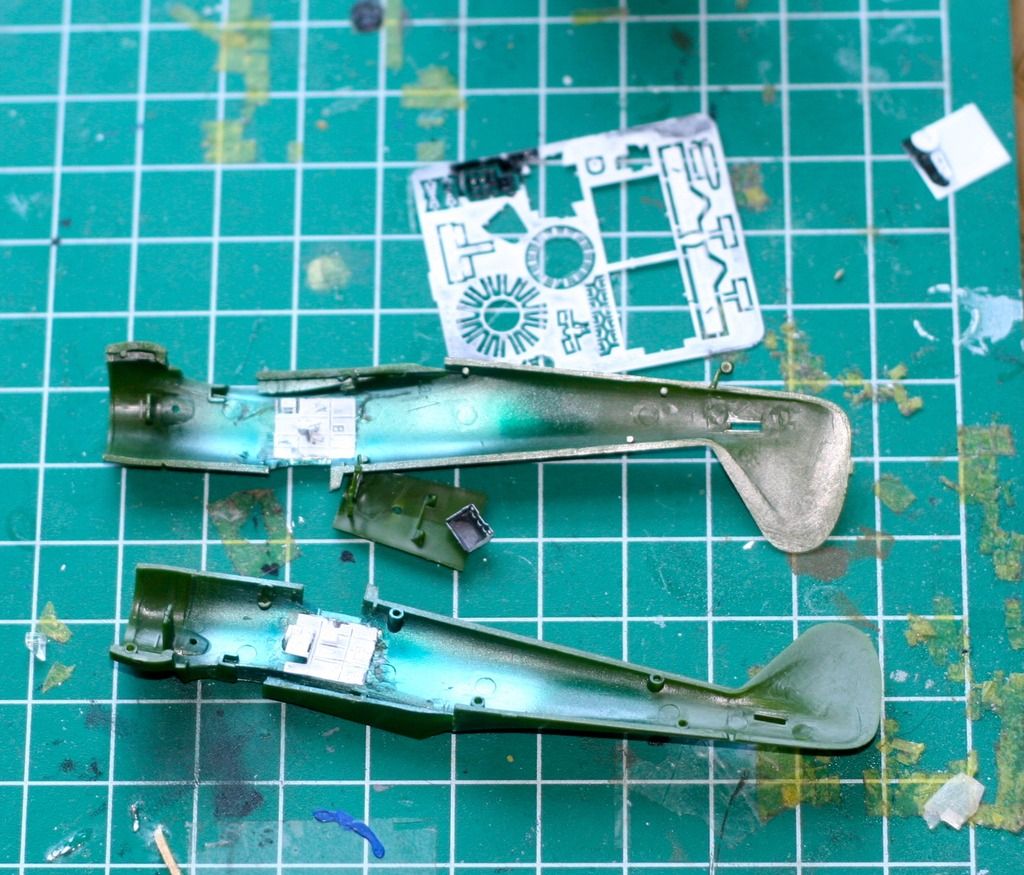
Some Panel Lining.

Undercoat.

Chipping.

Paint coat.
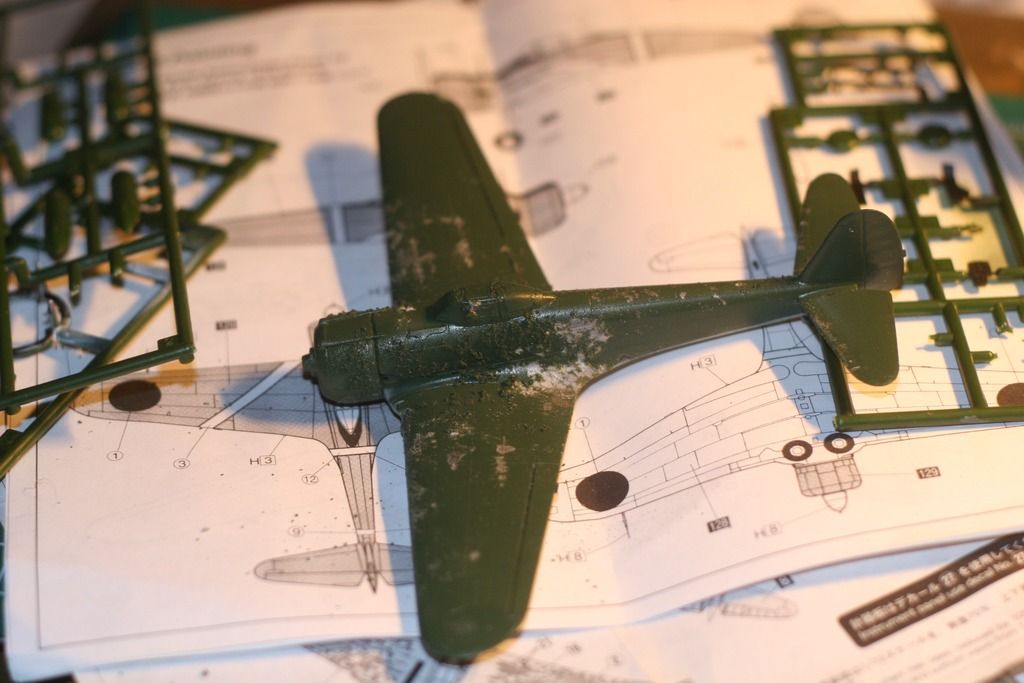

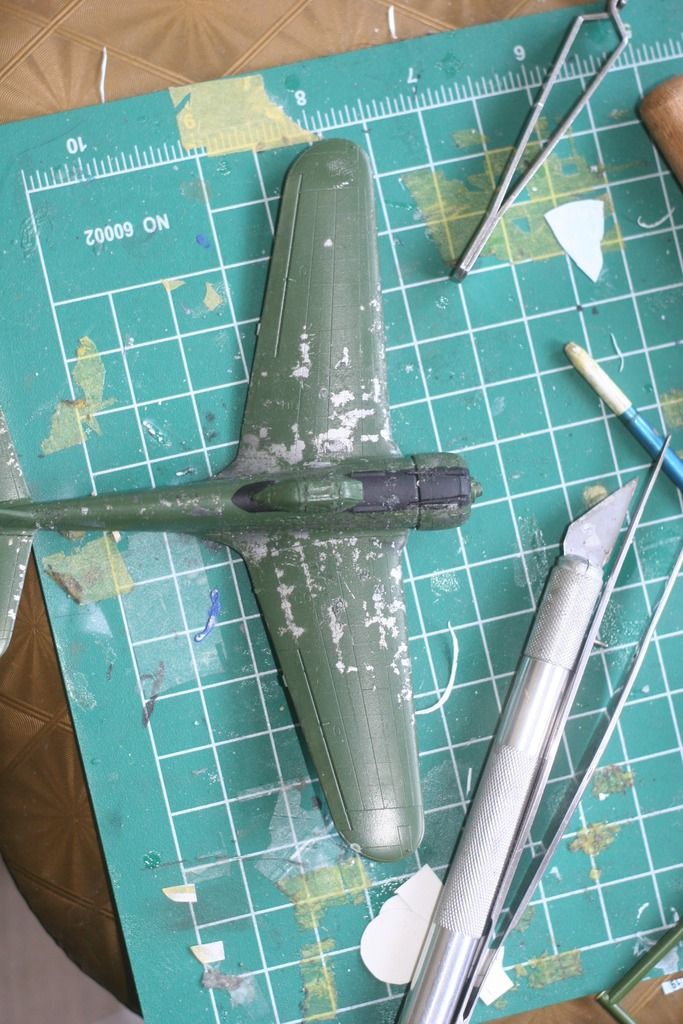
Kinda where I'm at now... needs a few more details and its ready to go. I added more chipping by painting on with Gunze and added the exhaust.

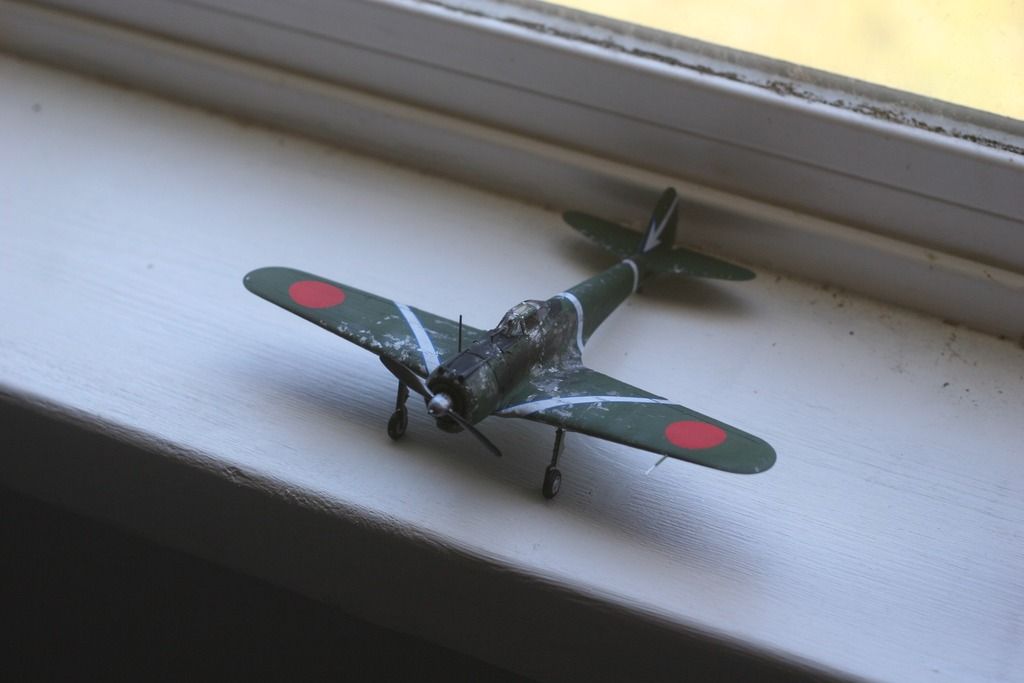
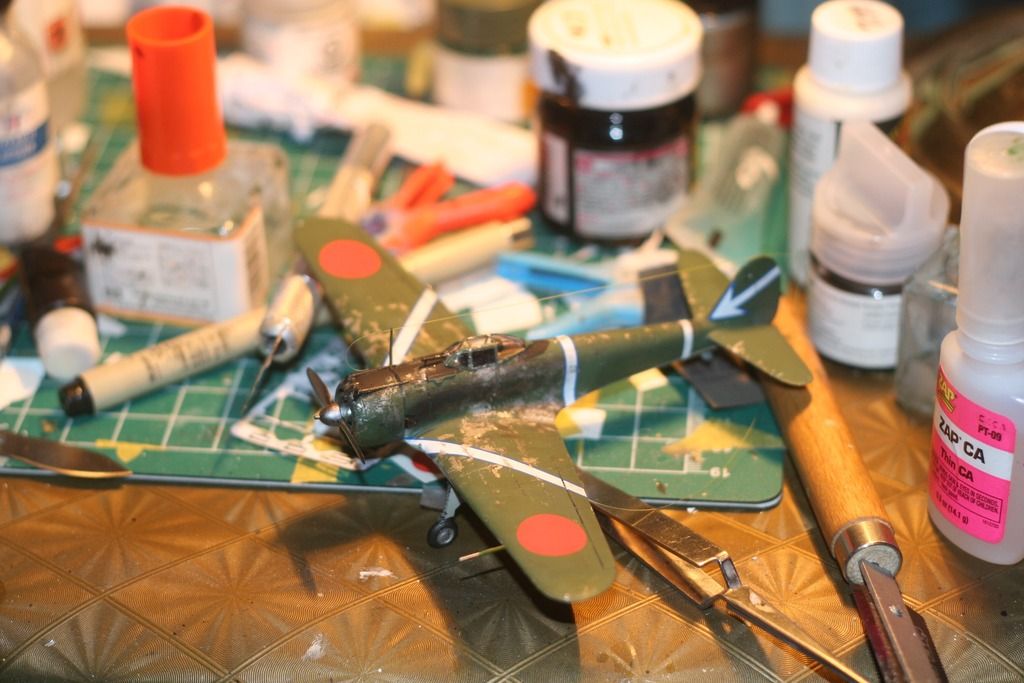
Thanks for looking.
-
Its one of my favourite scenes to depict... I might take you up on your offer DH, if you're willing.
-
Thanks for the details, guys.
Shame they didn't use the 'latest' F-14 model as the CGI model.
I actually like it the way it is. Somewhere along the way in the 1980s Macross history diverges from ours... and the designs have subtle changes due to a different history. I like that... it gives more character to history, which you can easily represent using a very good quality fujimi kit that is otherwise inaccurate. I think the best part of the fujimi kit is that you can make a very cool catapult diorama with the VF-0 and F-14... because it is one of the only kits in 72nd that you can build in launch configuration.
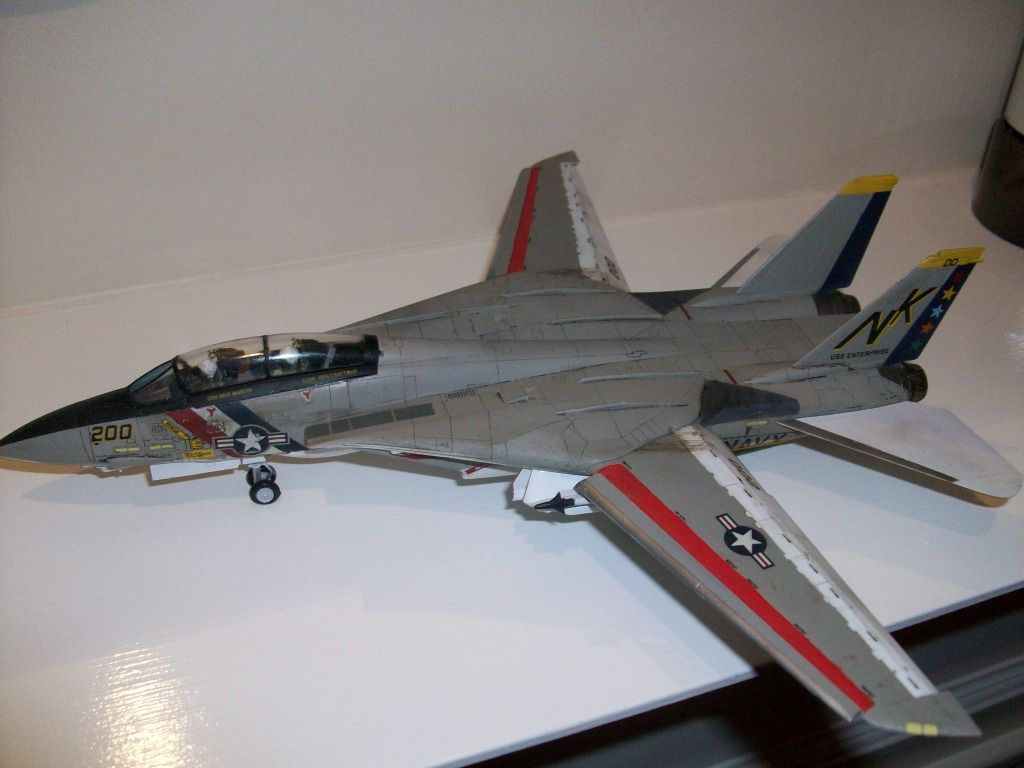
-
I think you're misremembering your previous assessment DH: its actually the Fujimi F-14D, not hasegawa.
http://www.macrossworld.com/mwf/index.php?showtopic=7550
Honestly? I wouldn't build the Fine Molds kit as a macross model, but that's me. The internals were said to be upgraded by overtechnology, which could mean anything for what the radar looks like or parts.
-
No more spills!
HAH! that's awesome. I've gone through so many SOL bottles due to tippage, its not funny.
I've actually supplemented the Micro line with Mr Mark Settler and Softener. For a lot of decals (particularly hasegawa) it is much better at getting decals down and getting a real painted-on look.
-
Well, you're really going to need to invest in some items.
The most basic is a razor saw. I personally like the JLC version, which they sell here. They give a really flat, consistent cut, and are the most basic of tools. A lot of people also use handheld dremel tools to cut, sand and the like. I think they are very good, I just find its initially more convenient and more rewarding for me to use non powered tools.
As for vacuform canopies, see my reply on post #329.
-
Very Very cool DarrinG. Its one of my favourite mecha ever. Have you built the 1/72 Kotobukiya kit?
So, I just finished this piece of old-school Soviet Metal.... its an old KP kit of the Su-7, with a lot of Resin and other aftermarket. I rescribed it, and put a fair bit of work into it.
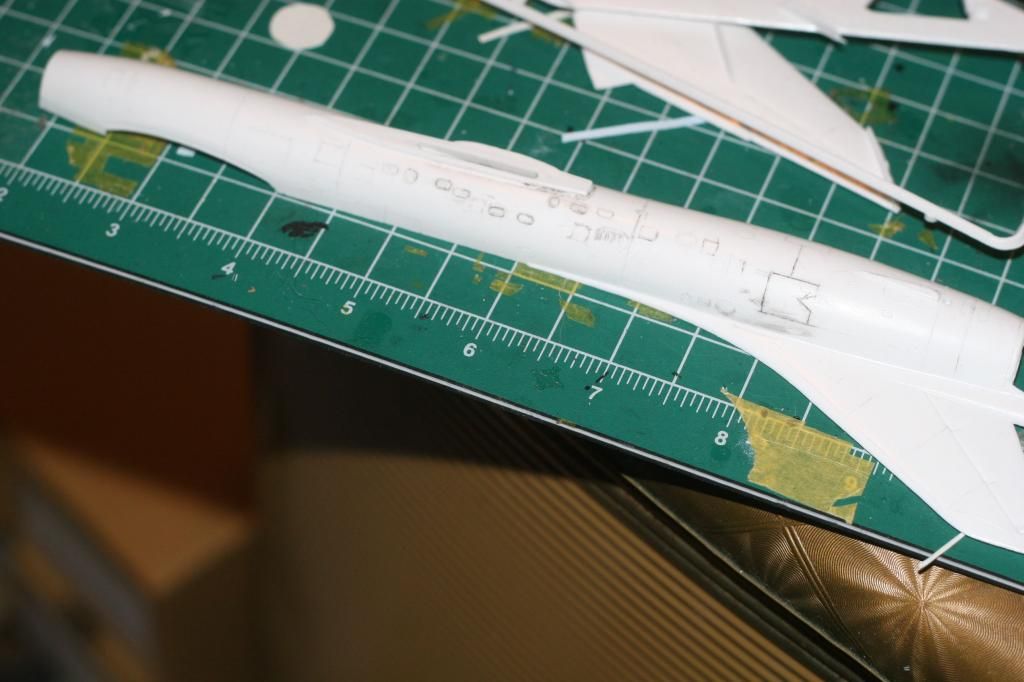
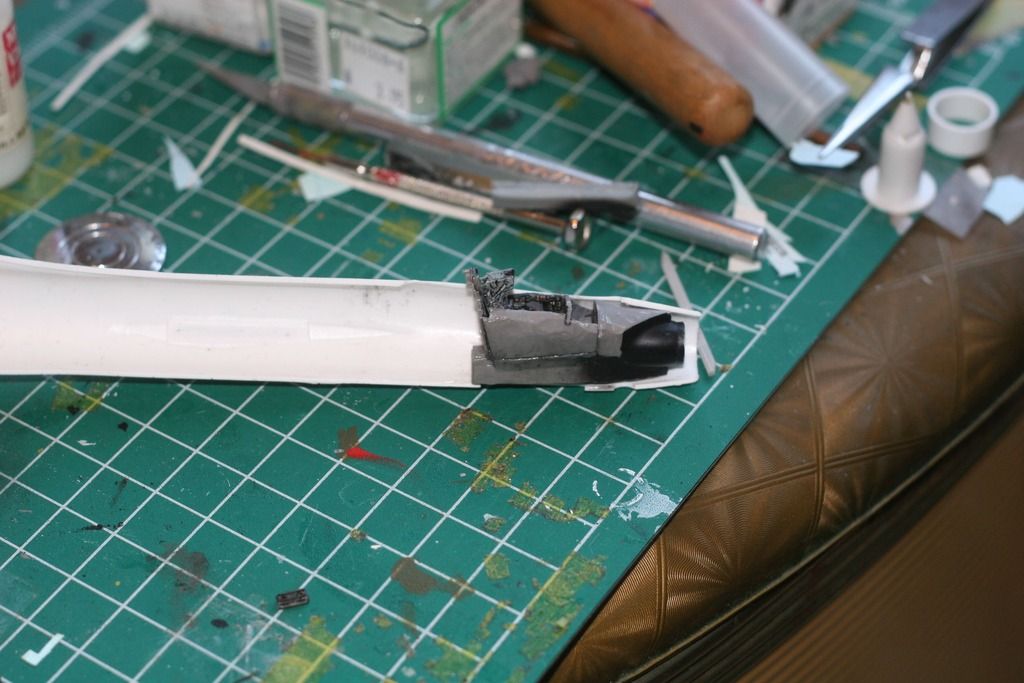
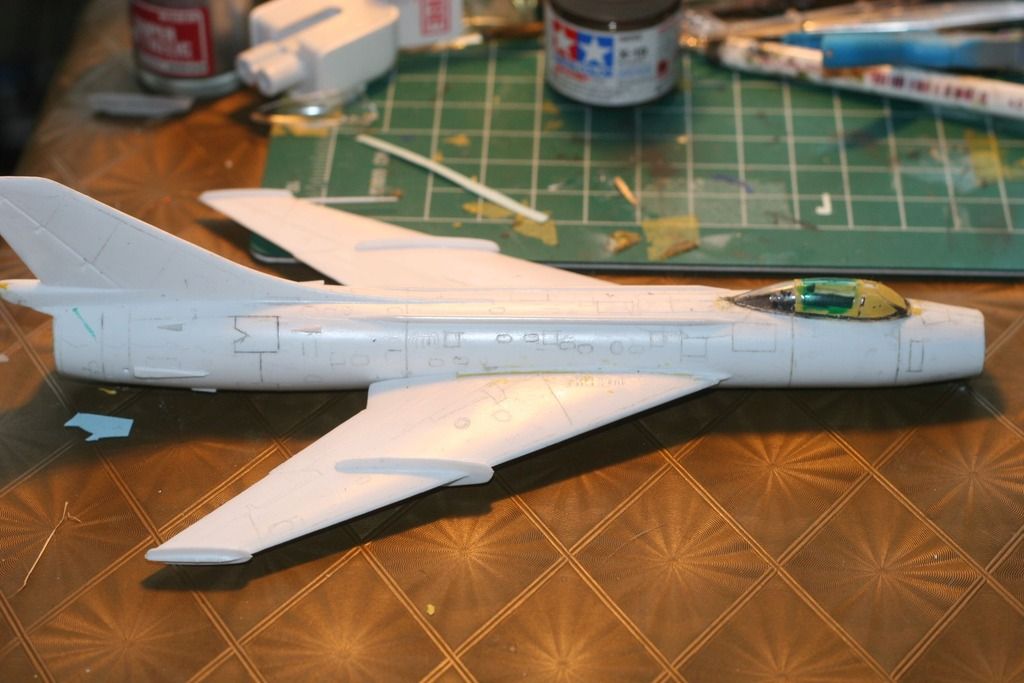
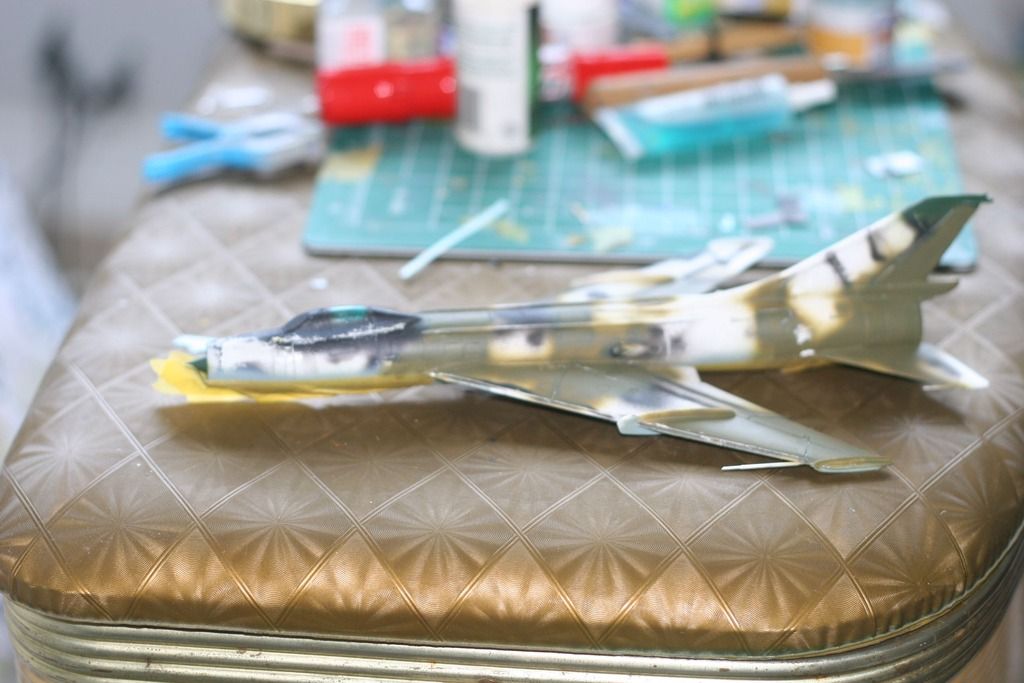
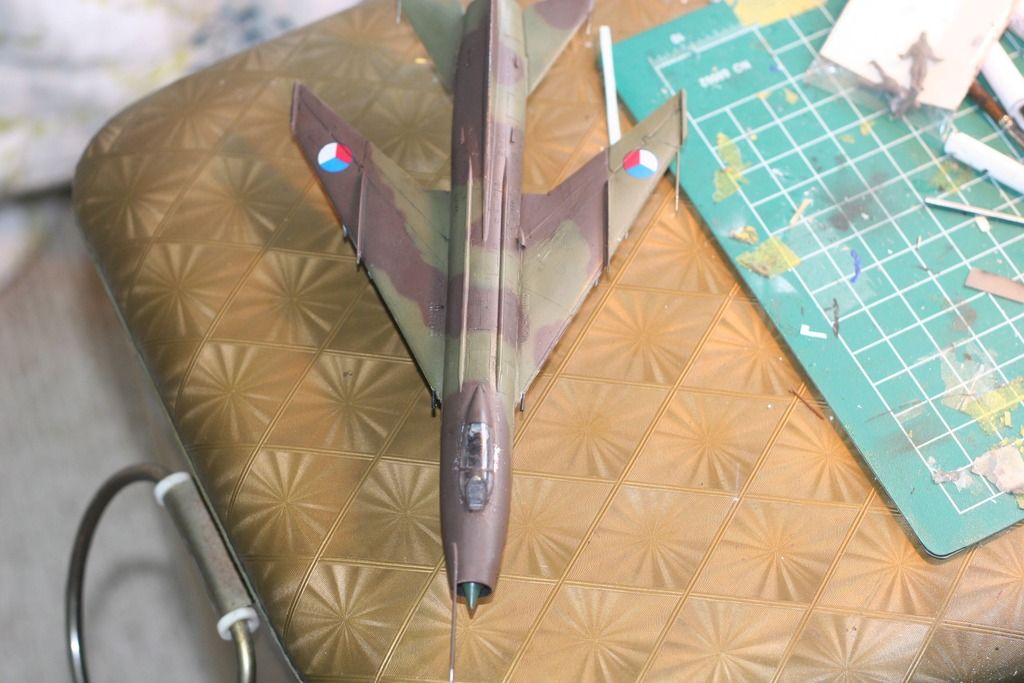
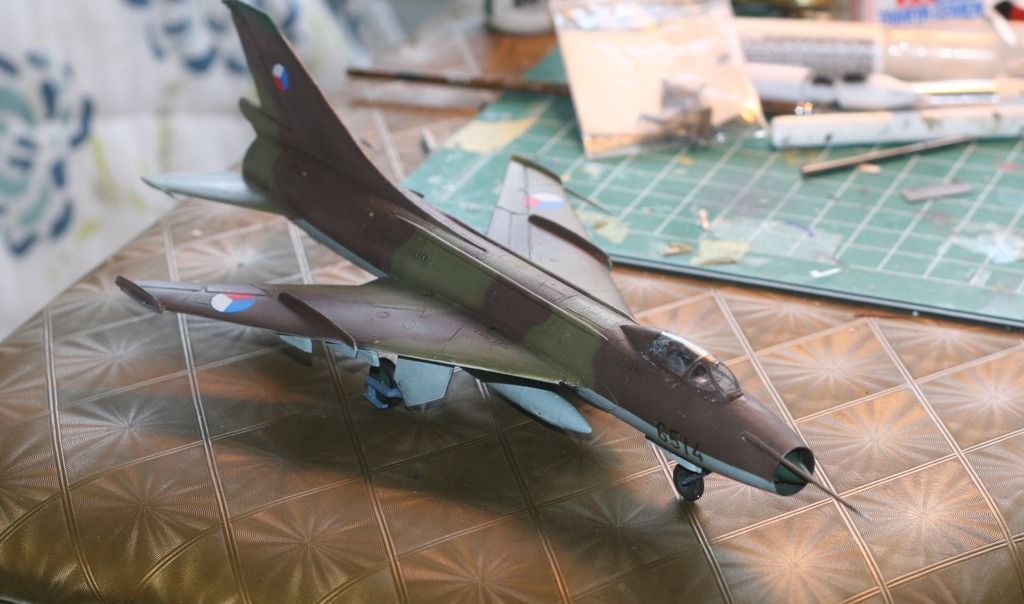
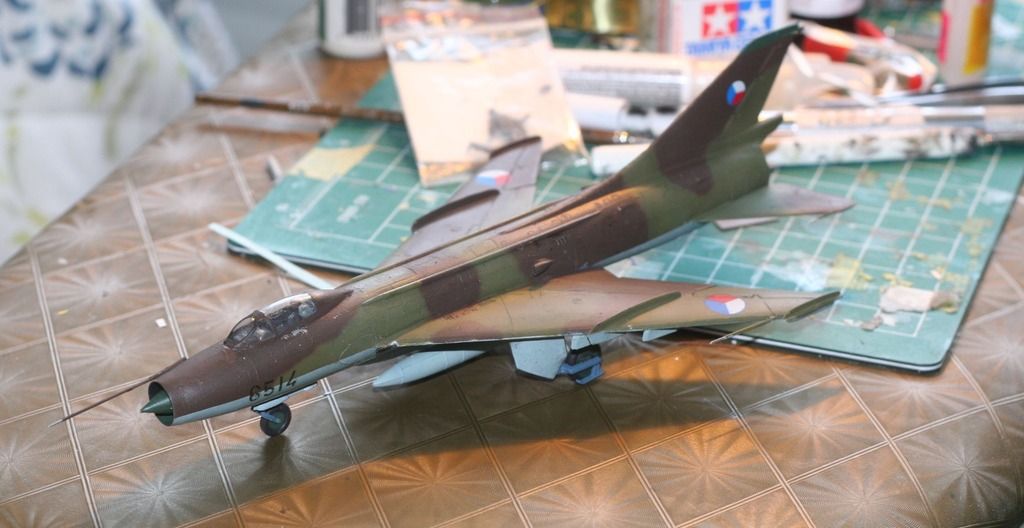
-
Are any of you going?
Its actually something I always want to go, but I never seem to make it. I was in Japan twice at the same time in the past four years, but I had to visit an ailing family member and could not make the journey. Perhaps I will go next year.
I've seen photos of some vendors selling sprues without boxes, and I would love to dive in (especially the fine molds booth). If anyone is going and happens to wander in, let me know.
1/72 Full Armor VF-11 kit Challenge
in Model kits
Posted
I already have the kit... how about we just start building later this year?